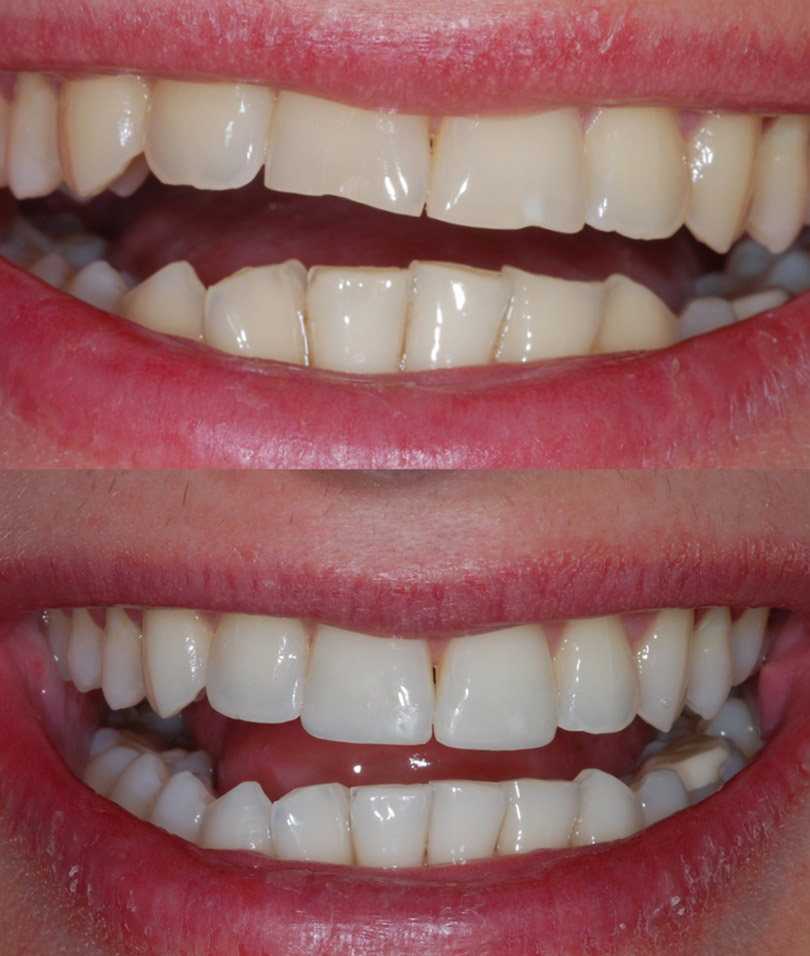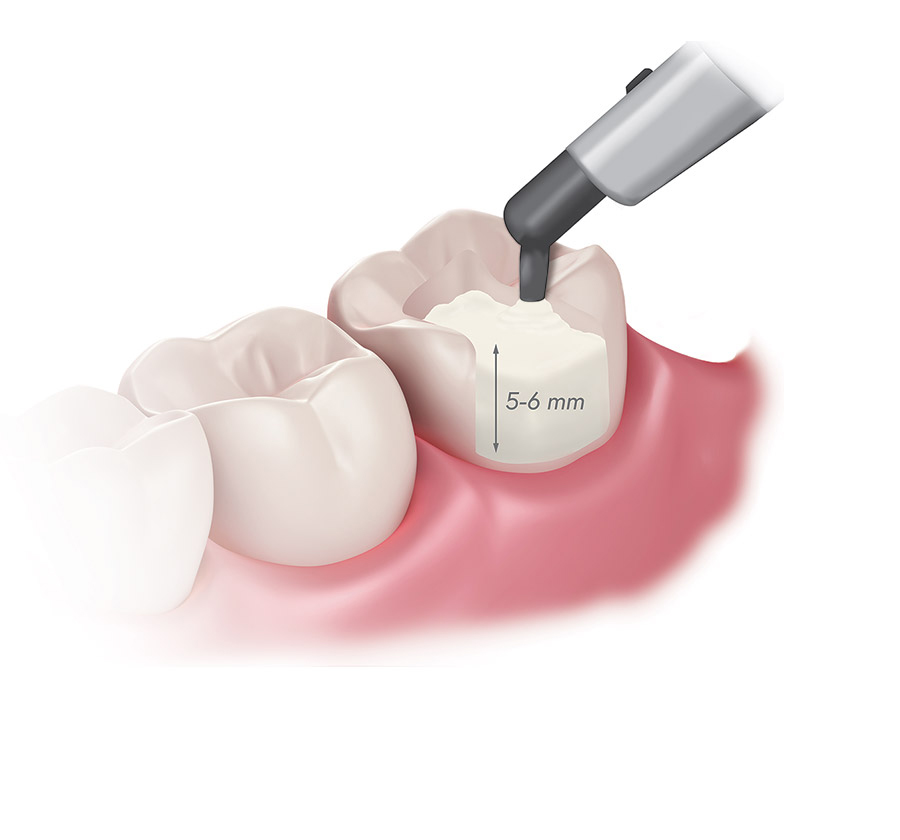
1. Bacterial plaque
2. Carbohydrate-rich foods (sugar, flour, etc.)
3. Intrinsic factors (tooth structure, composition of saliva, etc.)
4. Time (duration of food in the mouth)
Tooth decay can occur on the chewing surface of teeth, between the contacting surfaces of teeth, or on the neck of teeth. Detection of brown discolorations or cavities that are visible on the surfaces is straightforward. However, for cavities that do not exhibit these signs, a diagnosis through X-rays may be necessary.
Decay that starts in the enamel of the tooth progresses to the dentin if left untreated. Dentin is a structure that dissolves more easily than enamel, hence decay progression is faster.
If pain becomes constant, the decay has reached the pulp layer where the blood vessels and nerves of the tooth are located, and root canal treatment is necessary.

Bonding is a procedure that does not cause any harm to the teeth and is performed to address minor dental issues. Its aim is to enhance the appearance of the teeth and contribute to smile aesthetics.
Sometimes teeth can be overly large or small. Their color might not be as desired. In such cases, Bonding can be used to create a new appearance for the teeth through minor additions.
Bonding is easily applicable for closing unwanted gaps between teeth, as well as for making shape and color changes to teeth. It’s a method used for closing gaps between two teeth or multiple teeth. It’s also preferred for young individuals who have experienced incidents like accidents or falls where porcelain application is not feasible. It can even be successfully applied in cases where half of a tooth is broken.
If there are no existing problems with the teeth (such as cavities), anesthesia is not necessary. The procedure is painless, and there is no discomfort or pain felt during it. There is no need for tooth preparation prior to the procedure.
This procedure, which adds aesthetics to a person’s smile and addresses minor dental issues, is often performed in a single session. The duration of the session can range from 15 minutes to 1 hour depending on the scope of the aesthetic treatment. However, the number of sessions required can vary based on the individual and the specific treatment being performed.
In our clinic, composite fillings are commonly used.
It’s a plastic mixture containing silicon dioxide particles. It goes unnoticed in teeth due to various color options, and it’s also referred to as aesthetic-white filling. This material, once applied to the tooth using a special bonding agent, is hardened using a light device, and the polishing is done in the same session.
For porcelain fillings, an impression is taken from the prepared cavity and sent to the laboratory. When the patient returns for the next session, the polished porcelain filling is cemented into the cavity.


The harmony between teeth and gums is crucial for smile aesthetics. The physical impact of teeth on appearance underscores the importance of gingival esthetics. Asymmetric gum lines caused by various factors can create negative effects on physical appearance, leading to self-esteem issues for individuals. When gums recede due to various reasons, the teeth appear longer than normal. To address such issues, contemporary gum esthetics techniques are applied to achieve a natural appearance.
Gums that appear red and swollen due to edema draw attention to themselves during speech and smiling activities. This can lead to loss of self-confidence and have negative psychological and social impacts. Thicker gum tissues, darker than their normal color, create an undesirable appearance.
You may have encountered individuals whose gums are more prominent when they smile. Gingivoplasty is a method applied to correct smile aesthetics. The procedure is initiated under local anesthesia, and the patient does not experience pain or discomfort during this time. After a small surgical intervention, smile aesthetics are enhanced.
This method is applied in cases where gum recession is prominent. Chin bone retraction, which can be observed during tooth extraction, causes an annoying appearance, especially in the front teeth. As it can overshadow even the beauty of porcelain teeth, it’s considered an issue that detracts from their beauty. Surgical interventions can restore lost gum tissues, as seen with various procedures.


Gingival esthetics, which is generally considered suitable from the age of 17-18, leads to improved self-esteem socially. The procedure, which does not involve any harmful applications, can be performed on individuals aged 18 and older. It’s often preferred by middle-aged individuals. Adults who desire to look younger also opt for gum esthetics.
Achieving a healthy and beautiful smile.
Obtaining natural aesthetic-looking teeth.
Attaining gum tissues in normal colors and sizes.
Desiring to achieve ideal harmony between teeth and gums.
It’s evident that the physical appearance of teeth and gums affects daily activities like smiling and speaking. The more harmonious and perfect the combination of teeth and gums, the more natural and beautiful smiles will be achieved. Given the physical impact of teeth on appearance, the significance of gum esthetics is emphasized. Asymmetric gum lines caused by various factors can create negative effects on physical appearance, leading to self-esteem issues for individuals.

When coming to your first appointment, bringing previously taken X-rays and documents related to
past treatments will provide us with detailed information about your treatment history.
The requested date and time, depending on our doctors’ availability, may vary.
Please wait for us to reach out to you for confirmation.

Özer Dental Clinic, located on Alaiye Street, one of the bustling areas of Alanya, provides dental health services with its team of expert dentists.
Dr. Özer | Hacet Neighborhood, Alaiye Street, B.Uyaroğlu Apartment, Unit: 60/A, 07400 Alanya, Antalya
ÖzerDiş ® owns the Klinik32 brand, copying this content without permission is prohibited. | Copyright © 2018 www.ozerdis.com